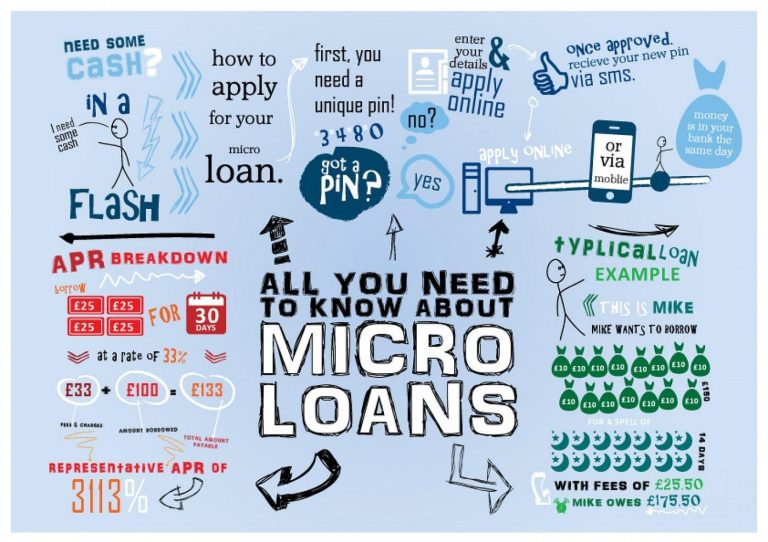In an era where entrepreneurial spirit drives economic progress, the importance of accessible funding cannot be overstated. Enter microloans—a financial tool designed to bridge the gap for startups and small businesses that may struggle to secure traditional financing. By providing small amounts of capital to aspiring entrepreneurs, microloans empower individuals to transform their ideas into reality, fostering innovation and growth within communities.In this article, we will explore the transformative impact of microloans on business advancement, illuminating how they not only alleviate financial barriers but also promote confidence, sustainability, and long-term success for entrepreneurs around the globe. Join us as we delve into the world of microfinance and discover how these small loans are making a big difference in the journey of countless aspiring business owners.
Table of Contents
- Understanding microloans and Their Role in Entrepreneurial Empowerment
- The Economic Ripple Effect: How Microloans Fuel Local Business Growth
- Success Stories: Transformative Outcomes from Microloan Recipients
- Strategic Recommendations for Optimizing Microloan Utilization in Startups
- In Conclusion
Understanding Microloans and Their Role in Entrepreneurial Empowerment
microloans have emerged as a transformative financial solution for entrepreneurs, especially in developing regions where traditional banking options are limited. By providing small-scale loans, frequently enough ranging from $100 to $25,000, these financial instruments empower individuals to kickstart or expand their businesses. Microloans are particularly accessible, requiring fewer qualifications and paperwork, which allows aspiring entrepreneurs to turn innovative ideas into reality. Notably, the loan process often comes with additional support, such as business training and mentorship, enhancing the borrower’s ability to succeed and repay the loan.
The impact of microloans on entrepreneurial growth can be illustrated through several key effects. They often lead to an increase in business sustainability, fostering resilience in local economies. Other benefits include:
- Job Creation: New businesses generate employment opportunities, uplifting entire communities.
- Innovation: Entrepreneurs are encouraged to pursue creative solutions and services.
- Financial inclusion: Microloans bridge the gap for those underserved by conventional financial institutions.
Furthermore, microloans contribute to the broader goal of reducing poverty by enabling entrepreneurs to build viable businesses that improve their own standard of living and that of their families. The ripple effect is profound, as accomplished enterprises lead to stronger community infrastructures and enhanced local economies.
The economic Ripple Effect: How Microloans Fuel Local Business Growth
The influence of microloans extends beyond the immediate financial support provided to individual entrepreneurs.When small businesses secure funding, they often invest in inventory, equipment, and marketing, leading to an uplift in local economies. This process stimulates job creation, as these businesses frequently require additional personnel to meet increased demand. as employment rises, local residents gain income, which, in turn, supports local services and vendors, creating a virtuous cycle of economic growth.
Moreover, the ripple effect of microloans fosters a culture of entrepreneurship within communities. As businesses flourish, they inspire other aspiring entrepreneurs to pursue their ambitions, enhancing the overall economic landscape. Key benefits include:
- Increased Local Investment: Successful local businesses frequently enough reinvest profits into their communities.
- Improved Infrastructure: Growth can lead to better facilities and services as businesses require enhanced amenities to thrive.
- Networking opportunities: Expanded businesses create platforms for collaboration and partnerships among local entrepreneurs.
Success Stories: Transformative Outcomes from Microloan Recipients
Strategic Recommendations for Optimizing Microloan Utilization in Startups
To fully harness the potential of microloans, startups should prioritize building a strong financial management system. A well-structured financial plan will enable entrepreneurs to track expenditures and allocate resources effectively. Essential components of this system include:
- Budgeting: Developing a detailed budget that outlines projected income and expenses.
- Cash Flow Management: regular monitoring of cash flow to ensure sufficient liquidity for day-to-day operations.
- Financial Forecasting: Utilizing past data and market research to predict future revenue streams.
Additionally, startups can enhance their chances of successfully leveraging microloans by establishing strong relationships with local financial institutions and support organizations. Engaging with these entities can provide not only funding but also valuable resources such as mentorship and networking opportunities. Key strategies include:
- Networking Events: Actively participating in local business events to build connections with potential lenders and partners.
- Workshops and Training: Attending programs that focus on financial literacy and effective business planning.
- Collaborative Partnerships: Forming alliances with other entrepreneurs to share best practices and resources.
in Conclusion
microloans represent a pivotal resource for entrepreneurs seeking to turn their dreams into reality. By providing accessible funding options, these small loans empower individuals to launch and expand their businesses, fostering innovation and economic growth in communities worldwide. The impact of microloans goes beyond mere financial support; they offer the confidence that comes from being entrusted with the means to succeed.
As we move forward,it’s crucial for policymakers,financial institutions,and community leaders to continue advocating for and developing microloan programs. By doing so, we can nurture a vibrant ecosystem that champions entrepreneurs of all backgrounds, ultimately leading to a more inclusive economy.
If you’re an entrepreneur contemplating the next steps for your business, consider exploring the world of microloans—your journey towards empowerment might be just a loan away. Share your experiences in the comments below, and let’s continue this conversation about the transformative power of microfinance in our communities. Together, we can build a future where every aspiring entrepreneur has the possibility to thrive.

